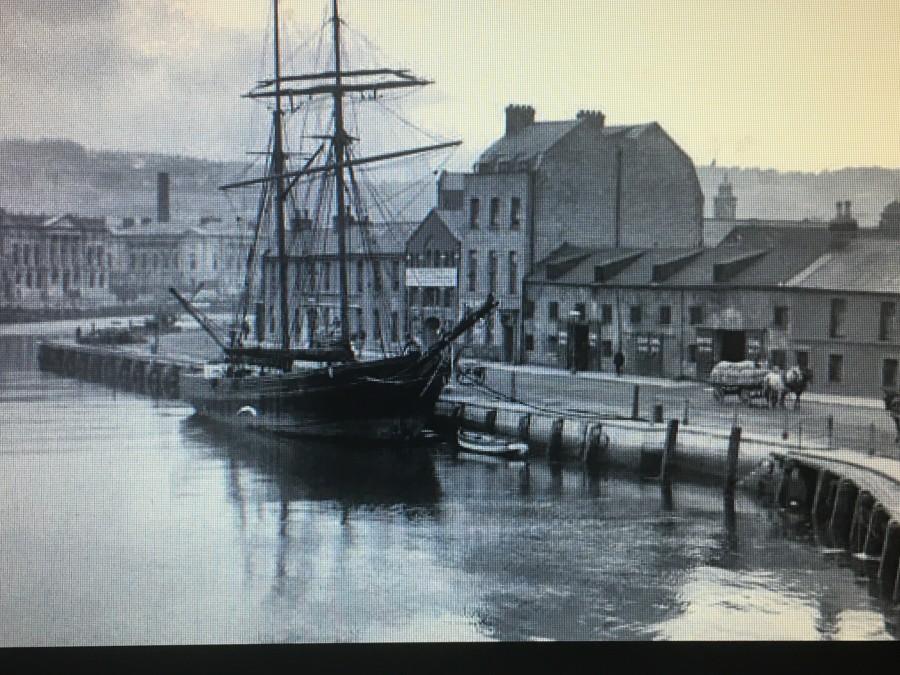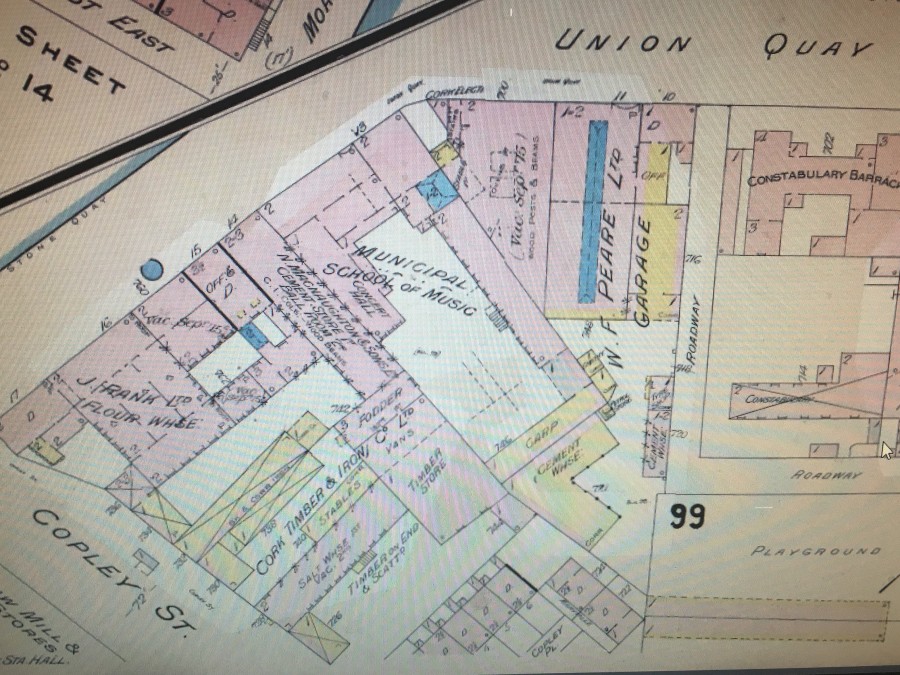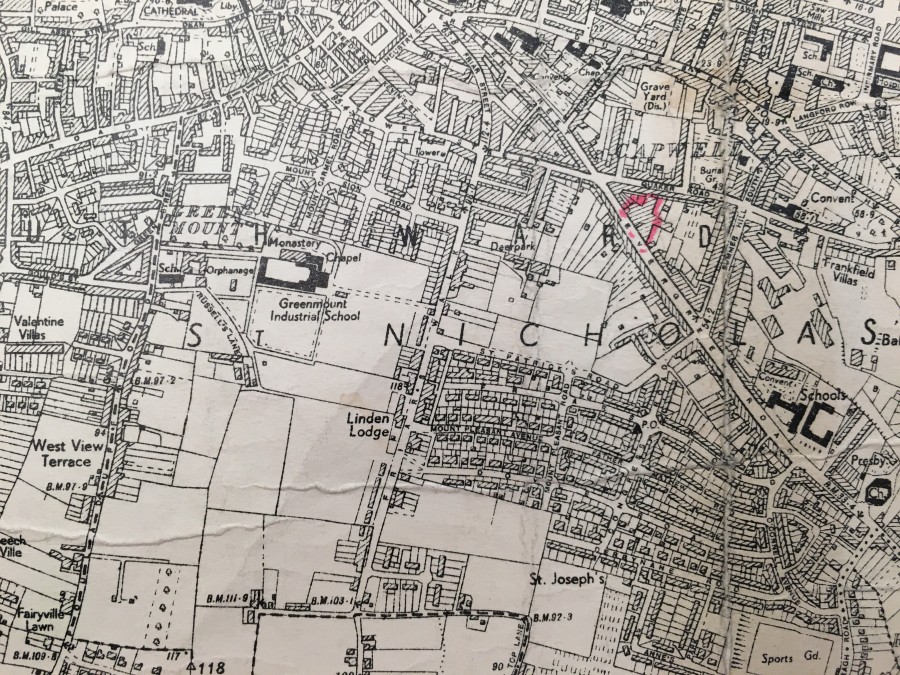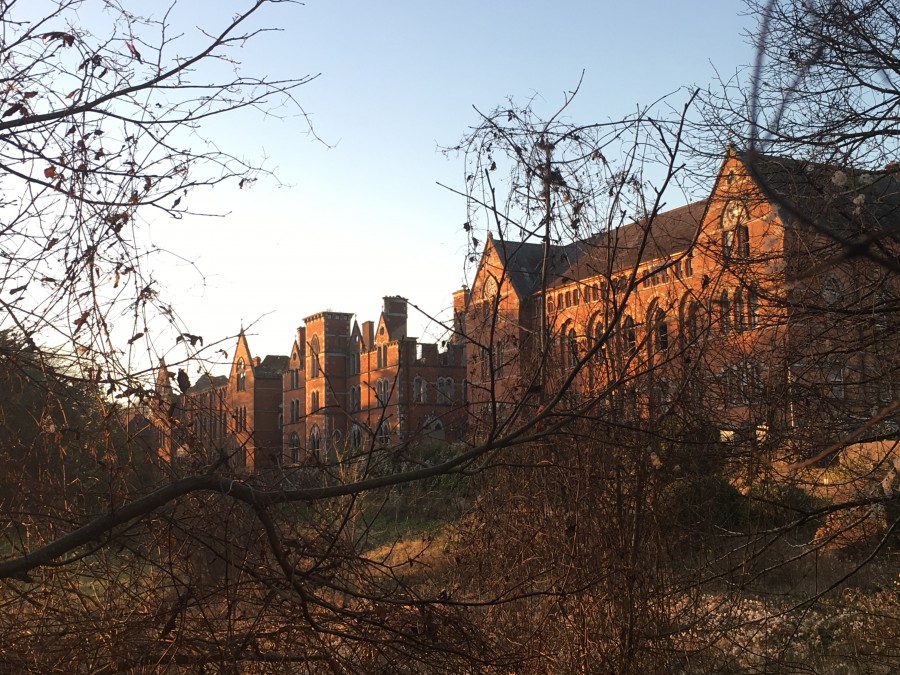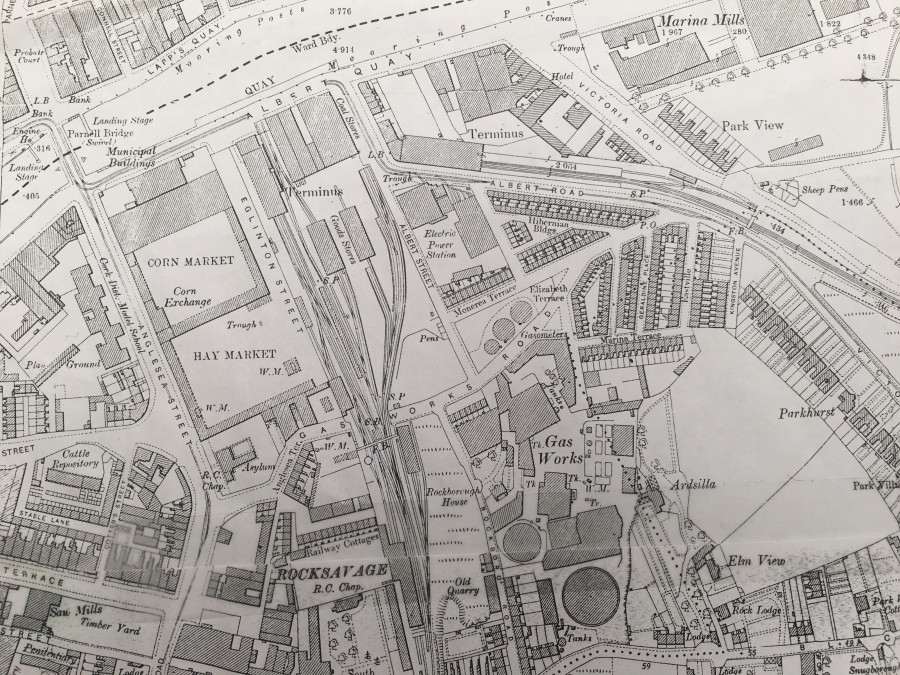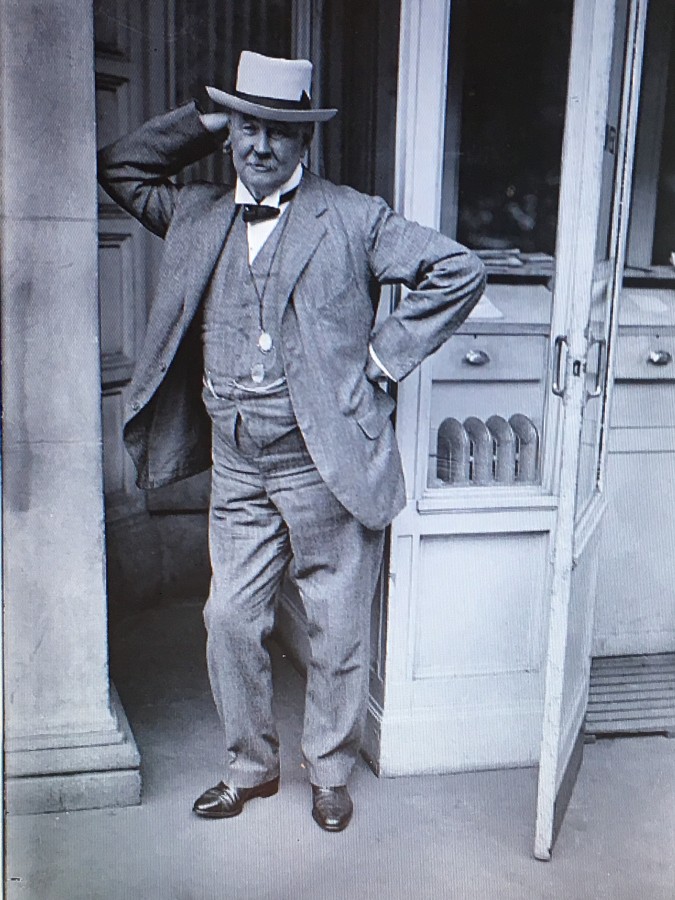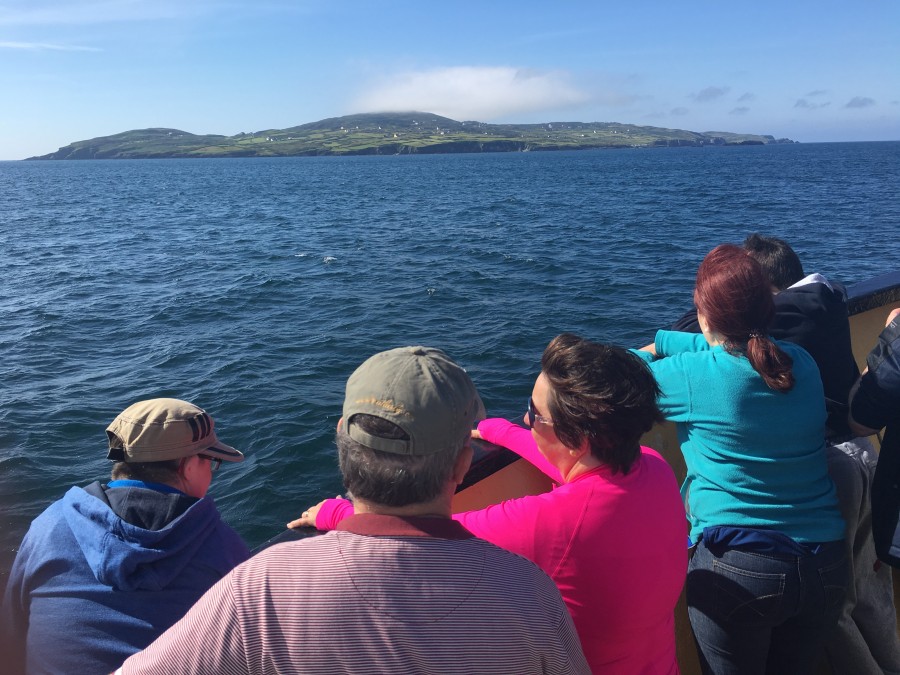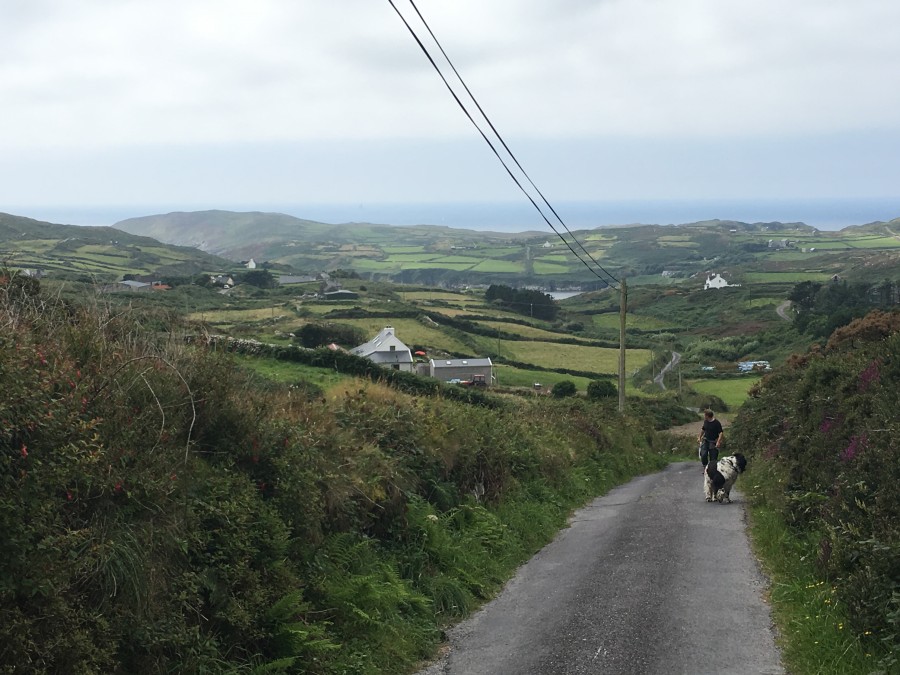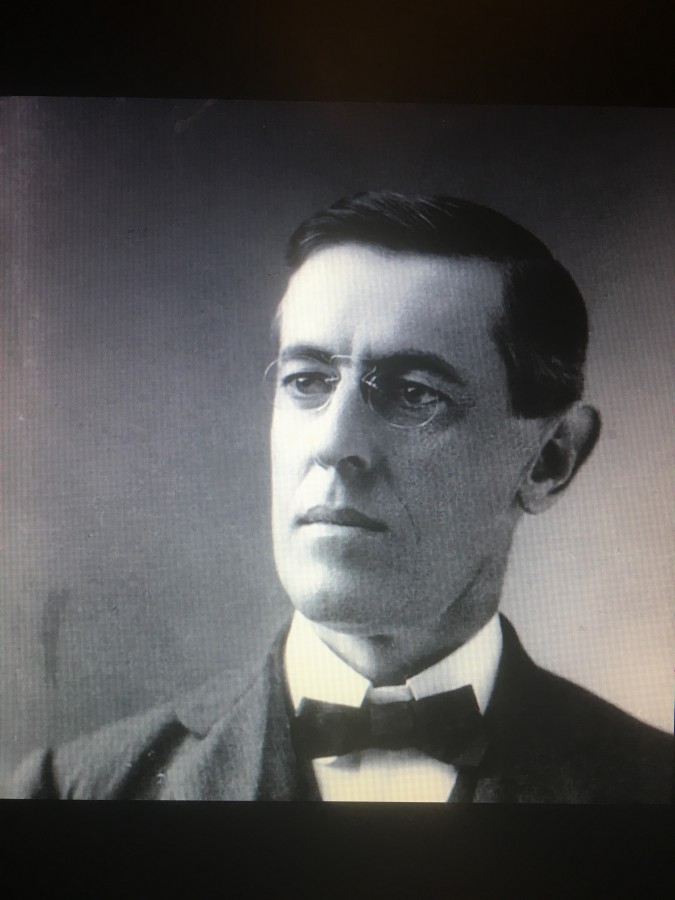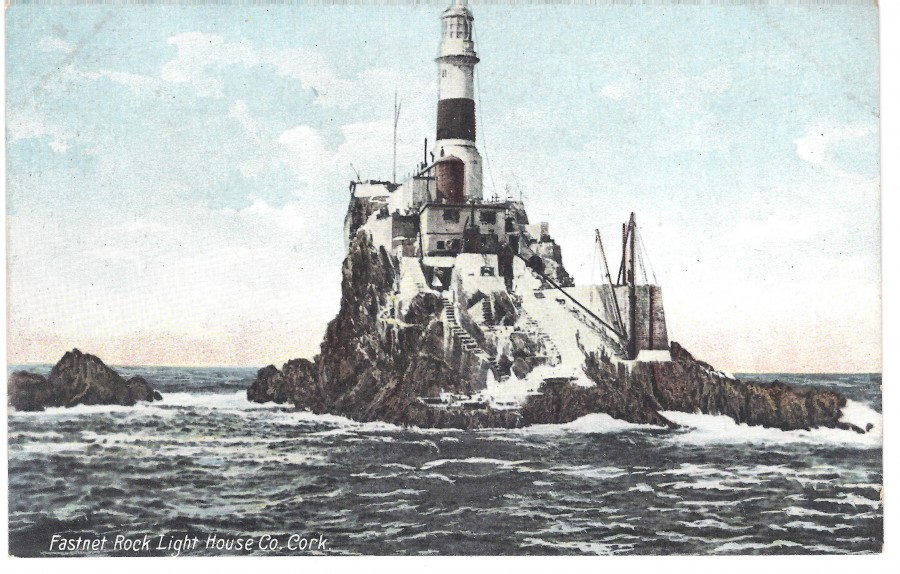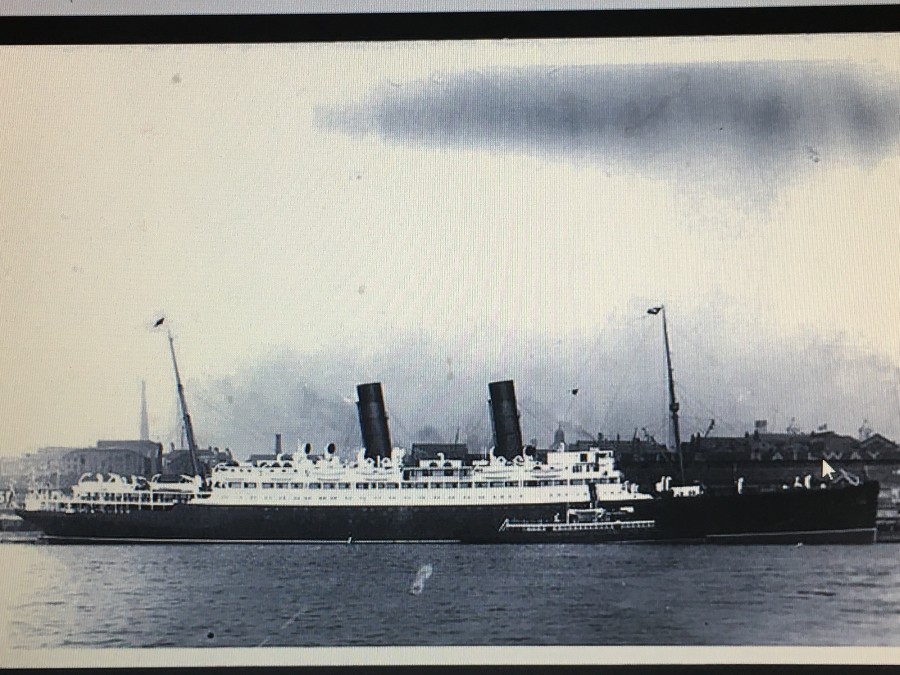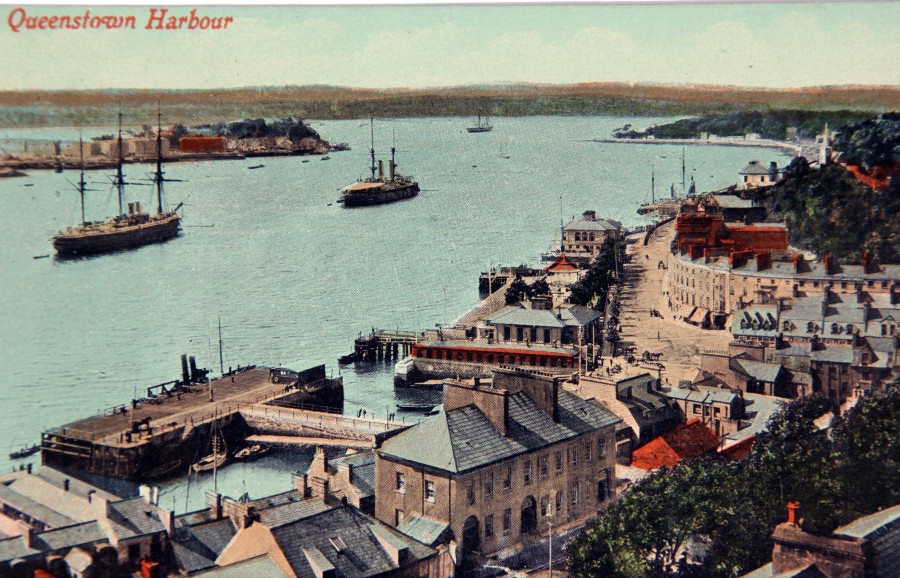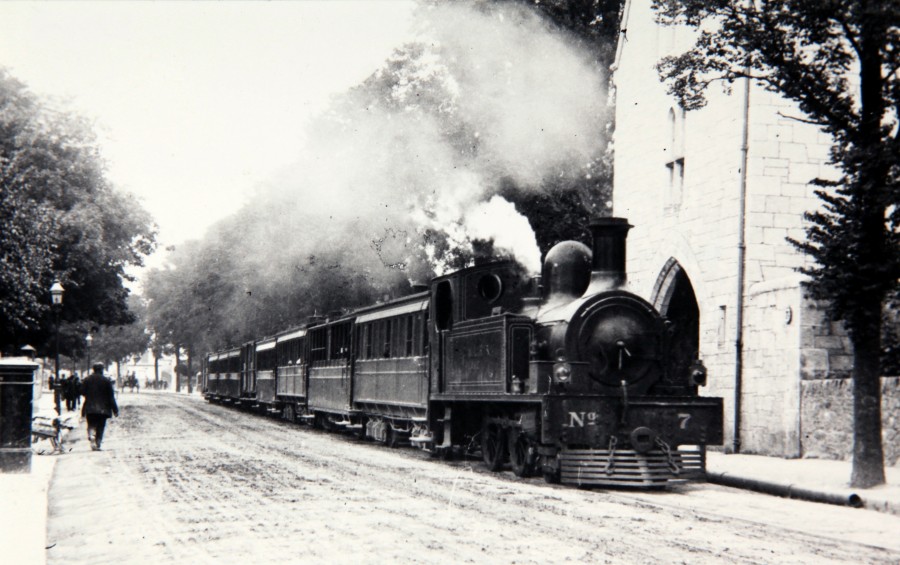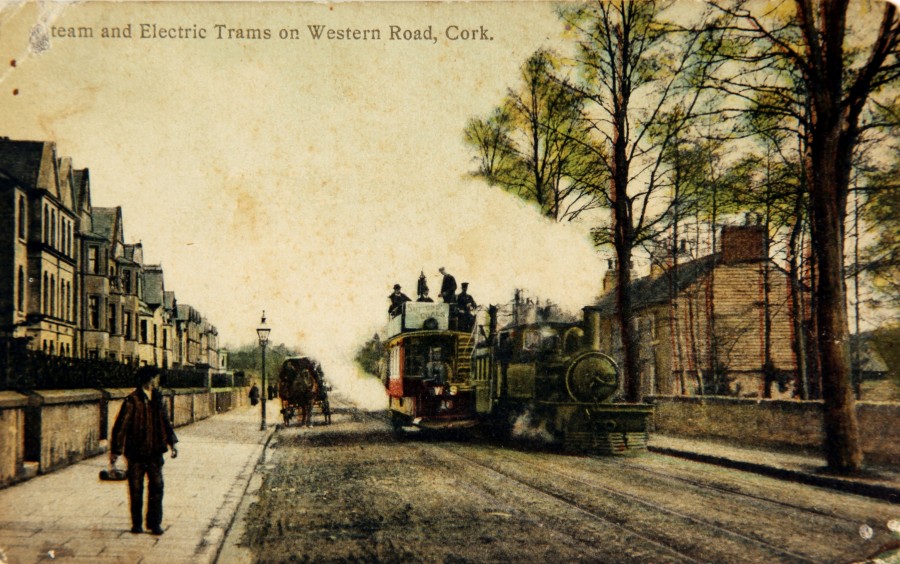Category Archives: Cork History
Kieran’s Our City, Our Town, 23 March 2017
Kieran’s Our City, Our Town Article,
Cork Independent, 23 March 2017
The Wheels of 1917: The Question of Reform
This week, one hundred years ago, coincided with the release of the Annual Report of the Chief Inspector of Reformatory and Industrial Schools in Ireland for the year 1915. Summarised in the Cork Examiner, some insights were given into the structure of such schools. The full report is also digitised as part of the online archive project on British Parliamentary Papers on Ireland, 1801-1922. Some 14,000 items have been digitised by the University of Southampton. In recent years the stories and realities of these schools are also well documented by the report (2009) of the Commission to Inquire into Child Abuse or the Ryan Report, which is online at www.childabusecommission.ie. These offer a comprehensive voice to the structure of processes carried out. However, from a family tracking perspective, archives are scattered between religious orders and the HSE making it difficult to track relatives from past archives even when personal sensitivity are considered.
Industrial and Reformatory institutions were run by religious orders and funded by the public. From the Industrial Schools Act of 1868 to the eventual decline of industrial schools in 1969, over 105,000 children were placed in this state care system. By the 1915 report, there were five reformatories and 66 industrial schools in Ireland. Eight of the latter were for boys under ten years of age, who were then transferred to senior schools. The number of committals to the boys’ and girls’ reformatories increased during the 1915 year, and was in excess of the number committed during the previous two years. The Chief Inspector describes the process for committal for juvenile offenders; “offenders were often only committed when they appear several times before a court, and when unfortunately, they had become fit cases for committal to a reformatory. It would naturally be better that when children are in danger of being led into criminal courses that they were at once taken away from their surroundings and sent to an industrial school”.
In his report, the inspector stressed that being sent to such institutions was not implying committees were guilty of a crime; “Committing a child in one of the former does not imply in any way that he or she is guilty of any criminal offence, or has any tendency towards crime. Amongst children liable to be sent to an industrial school are those under fourteen years of age who may be found begging or receiving alms in any street or premises, whether or not there is any pretence of singing, performing or offering anything for sale; those found wandering and not having any home or settled place any of abode or visible means of subsistence; those not being orphans, found destitute; children under the care of parents or guardians of drunken or criminal habits, and orphans found destitute”. The inspector outlined his perspective that such institutions were to protect destitute children in society; “children will be seen from the foregoing that the purpose of the industrial schools is to provide protection for children who may be destitute or on the way, owing to their surroundings, of lapsing into criminal habits. The reformatories are intended to reclaim young persons who have been found guilty of offences against the law, and to enable them to learn to be useful members of the community”.
An account was given by the inspector of a section for training in domestic science and economy, which were located at four of the industrial schools for girls of the age of sixteen years, and upwards. The Inspector writes about such courses as being set up to provide training to young women who wish to earn a livelihood as household servants. There was he noted; “a desire to undergo a course of sound training in housekeeping, after the expiration of their ordinary period of residence at these schools”.
One hundred years ago, the two industrial schools in Cork were the Greenmount Industrial School for boys and the girl’s industrial school of St Finbarr’s, which was based within the Good Shepherd Convent complex at Sunday’s Well adjacent its Magdalen Asylum and Laundry. Information on the St Finbarr’s school is difficult to source. There is a report of the “Inter-Departmental Committee to establish the facts of State Involvement with the Magdalen Laundries (2013)”, which mentions St Finbarr’s Industrial School but nothing substantial. There is work to be pursued on its history and realities.
The Ryan Report outlines a detailed historical timeline of Greenmount Industrial School. By the turn of the twentieth century, it was certified to take in 200 boys and work was progressing at the grounds so that it would become a farm proficient of giving the boys training in farm work, and at the same time provide food for the School and additional income from the sale of farm produce. The School was constructed on eight acres of land, and the staff and boys in the School began cultivating the surrounding land. The Presentation Brothers continued to develop the farm. They purchased much of the surrounding land at the turn of the century, and the adjacent farm comprised approximately 39 acres by the early twentieth century.
Greenmount also had two further farms located at Lehenagh, on the outskirts of the city. It is recorded in the School annals that the Management decided to sell these farms because of difficulties arising in the day-to-day management of them. The Department of Education records described the farm: “The farm attached to this school has an area of 39 acres. It is used to supply milk and potatoes to the institution. Fifteen cows are kept and the feeding for these is grown on the farm”.
For more information on the Irish Industrial Schools and sources for families, see www.childabusecommission.ie.
Captions:
887a. Map of Greenmount Industrial School and surrounds, 1949 (source: Cork City Library)
887b. Ruin of Good Shepherd Convent, present day (picture: Kieran McCarthy)
Kieran’s Our City, Our Town, 16 March 2017
Kieran’s Our City, Our Town Article,
Cork Independent, 16 March 2017
The Wheels of 1917: A Principle of Freedom
The question of Home Rule for Ireland reverberated throughout the press in 1917. This week, one hundred years ago, coincided with another fall by a motion in the House of Commons in Westminster calling for its implementation. The motion was proposed by MP T P O’Connor who was a journalist, an Irish nationalist political figure, and MP for almost fifty years.
Mr O’Connor’s colleague John Redmond MP was leader of the Irish Parliamentary Party from 1900 until his death in 1918. Redmond achieved the two main objectives of his political life: party unity and, in September 1914, the passing of the Irish Home Rule Act. The Act granted limited self-government to Ireland, within the United Kingdom. However, the application of Home Rule was deferred by the advent of World War I. Redmond called on the National Volunteers to enlist in Irish regiments in the British Army and support the British and Allied war effort.
To condemn the fall of T P O’Connor’s motion, a special meeting of the Cork City Executive of the United Irish League (UIL) was held on 12 March 1917 at Cork City Hall. Mr William Murphy, Coroner, presided; the Lord Mayor Thomas Butterfield was also in attendance. The United Irish League was co-founded by William O’Brien and Michael Davitt in 1898 as an attempt to inject new synergies into the Home Rule movement. The League was focused on agrarian reform and it was hoped that this policy would provide the foundation for reuniting the national political movement. It became very popular with tenant farmers and branches of the organisation were established all over the country. The UIL peaked in the first decade of the early twentieth century. By 1902 O’Brien’s UIL was by far the largest organisation in the country, comprising 1150 branches and 84,355 members.
As it entered the 1910s, the United Irish League, became largely diluted by members of the Ancient Order of Hibernians, the rise of a breakaway group the All For Ireland League (by William O’Brien), and the rise of Sinn Féin post 1916. From 1918, the UIL was restricted to Northern Ireland, and was defunct by the mid-1920s. The fact that it survived in Cork in the late 1910s is testament to the local executive who promoted it and kept it going. The Cork President of the UIL, William Murphy had been a personal friend of Charles Stewart Parnell and an active member for over four decades of the Parnellite and later the Redmondite organisations in Cork. His obituary in 1936 reveals that he even stood unsuccessfully for Parliament as a United Irish League candidate in 1909. He was also for many years one of the leading solicitors and coroners in the county and was law adviser to the Harbour Commissioners and Cattle Traders’ and Licensed Vintners Associations.
The 12 March 1917 City Hall event was written up in the Cork Examiner. The meeting was heated and highly political. The Chairman William Murphy noted of his disgust and anger to the conclusion of the Westminster debate; “the result of the debate proved conclusively to the world that Ireland had now, as before, the gravest doubt of honourable treatment being accorded to Ireland as distinct from any part of the world”. Mr Murphy outlined in the narrative of his speech that for the previous ten years, majorities had been returned to pledged to support Home Rule. Before the war, Home Rule went through all the stages of the House of Commons and was placed in the statute book. It was however according to him “not to be enforced until the minority of the people who opposed it agreed to it”. The chairman denoted his frustration at the political system; “the principle that minorities should acquiesce before any enactments were put into force was never before applied, and he believed it would never be applied again”.
The Chairman criticised the elite for not progressing the Home Rule Act; “The Irish struggle was an old one, and they could tell these gentlemen in England that the Irish Nationalists never despaired, even though at times they had reason of despondency. Irishmen had pluck and pride in their race, and believed in the future of it, and will never cease the struggle until the full accomplishment of National Self Government is realised”.
Arising out of William Murphy’s debate, the Lord Mayor proposed a motion for the room to adopt; “that having regard to the treacherous and dishonourable conduct of Mr Lloyd George’s Government in refusing to enforce the Home Rule Act for all Ireland either now or after the war unless Sir Edward Carson and his followers, which is tantamount to a complete repudiation of the treaty arrived at between England and Ireland, and embodied in the Home Rule Act, we endorse the action of the Irish Party in leaving the House of Commons, and deciding immediately to oppose the Government; and we hope they will take vigorous action both in the House of Commons and the country. We further desire to point out that the principle of freedom for small nationalities, which involves the right of the majority in any nation, cannot be applied with justice to Belgium, Poland and Serbia, unless it is also applied to Ireland”. The resolution was unanimously adopted by all those present.
Cork 1916, A Year Examined (2016) by Kieran McCarthy & Suzanne Kirwan is now available in Cork bookshops.
Cork City History Tour (2016) by Kieran McCarthy is also available in Cork bookshops.
Captions:
886a. City Hall & environs showing a busy district of dock, engineering and City Markets, c.1900 (source: Cork City Through Time by Kieran McCarthy and Daniel Breen)
886b. T P O’Connor, MP, 1917 (source: public domain, Library of Congress, USA)
Kieran’s Question to the CE, Cork City Council Meeting, 13 March 2017
Question to the CE:
To ask the CE on an update on the Penrose Quay hoarding? Whilst acknowledging, the recent creation of a smaller hoarding space, it is now eight years since my initial asking of when this remnant of the Cork Main Drainage Project will be completed and the site levelled off (Cllr Kieran McCarthy)
Motions:
That the City Council create a new historic city centre action plan for North Main Street?
Kieran’s Our City, Our Town, 9 March 2017
Kieran’s Our City, Our Town Article,
Cork Independent, 9 March 2017
The Wheels of 1917: The Eye of the Lifeboat
On Saturday evening, 10 March 1917 in the Lifeboat House, Baltimore, silver medals were awarded by the Royal National Lifeboat Institution (RNLI) to Con Cadogan, Michael Cadogan, Tim Cadogan, John Daly, and Michael Daly all from Cape Clear for their rescue of crew from the sunken ship, the SS Nestorian.
Both the Southern Star and the Cork Examiner describes that the Bishop of Ross, Dr Kelly addressed the large crowd present and related the brave exploits of the medal receivers. On 2 January 1917, in the pitch darkness the Royal Mail Steamship Nestorian entered a thick fog went on the rocks near Cape Clear. Con Cadogan, described by the Bishop as a “patriarch of the Island, with the trained ear of the old Sea dog”, recognised the gun’s fire in distress. He awoke his boys and awoke their neighbours, the Dalys. All went out on Con Cadogan’s fishing boat, and in tow they had a small punt. As they got to the scene of the wreck, the Nestorian was already breaking up, and the sea was strewn with spars and wreckage of all kinds. The fishing boat could not approach the wreck, and the two Cadogans and the two Dalys got into the little punt, and rowed into the high waves to rescue ten of the crew. In time a naval boat arrived to rescue others.
The SS Nestorian was built in 1911 by Leslie Hawthord & Co Ltd of Newcastle upon Tyne and was owned F Leyland. She was powered by a four cylinder quadruple expansion steam engine which generated 510 hp. She was en route from Galveston, USA for Liverpool with a cargo of cotton & steel ingots and empty shell heads when she hit rocks off Cape Clear. Fifty-two of her crew were rescued and one died when he fell from the rigging.
Reference at the medal ceremony of the Cadogans and Dalys was also made of their pursuits in helping the crew off the passenger and cargo ship Alondra. It ran aground on 29 December 1916 on Kedge Rock, an island off Baltimore with sheer rock cliffs. Sixteen of her crew were able to get aboard one of the ship′s lifeboats, but they drowned before they could reach safety. Another man died on board. Meanwhile, Archdeacon John Richard Hedges Becher, who was serving as the honorary secretary of the Baltimore Royal National Lifeboat Institution (RNLI), set out with a rescue lifeboat. He failed to reach Alondra on the first try and again on the second. When the sun rose, he and his lifeboat crew set out a third time using a rocket apparatus and managed to reach the vessel. While the lifeboat worked from one position, the crews of Royal Navy trawlers worked from the tops of the cliffs to lift other surviving crew members out of Alondra. In total, 23 men were rescued from the ship. The RNLI awarded silver medals for gallantry to Archdeacon Becher and to Lieutenant Sanderson for assisting with the rescue. In 1913, the RNLI had established a lifeboat base in Baltimore, which could have been of assistance in rescuing the crew of the Alondra. Unfortunately, World War I delayed the official opening of the base until 1919. In 2013, a professional film crew sponsored by the Arts Council England created a film based on the events surrounding the Alondra shipwreck of 1916. The film was made in collaboration with the RNLI and the Baltimore Drama Group. Wreck diving is popular in Baltimore at sites such as the Alondra wreck.
The RNLI was established in 1824 and its local lifeboat centres have a great history of recording their stories and their importance through books and websites. Two of the first lifeboat stations in Cork were established in Courtmacsherry and Kinsale respectively in 1825. Both were also one of the first in Ireland. The first record of a lifeboat in Cork Harbour also dates back as far back as 1825. A boat was built in Passage West and sailed to Liverpool in an unsuccessful attempt to get the Institution to adopt the design. The Ballycotton Station was established by the Institution in 1858 to afford protection to the shipping frequenting the port of Cork and, together with the new stations at Youghal and Ardmore (closed 1895) and others, created to guard the English and Irish channels. The Queenstown Lifeboat Station was established by the Institution in 1866 following several wrecks with loss of life off Cork Harbour.
During World War I, RNLI lifeboat crews launched 1,808 times, rescuing 5,332 people. With many younger men on active service, the average age of a lifeboatman was over 50. Many launches were to ships that had been torpedoed or struck mines, including naval or merchant vessels on war duty and many were in non-motor propelled boats. The Lusitania on route to New York on 7 May 1915 was torpedoed and sunk by a German U-boat south of Courtmacsherry Bay, with the loss of 1201 lives. The Courtmacsherry Lifeboat crew was alerted to the tragedy and, because of very fine weather that day the sails were of no use so they rowed the Kezia Gwilt lifeboat 15 miles to the scene of the sinking. Today there are 45 Lifeboat stations in Ireland and 237 in total run by the Royal National Lifeboat Institution.
Check out the small museum on island and coastal community life in the old national school on Cape Clear island plus the ferry times are on www.calinoir.com
Cork 1916, A Year Examined (2016) by Kieran McCarthy & Suzanne Kirwan is now available in Cork bookshops.
Cork City History Tour (2016) by Kieran McCarthy is also available in Cork bookshops.
Captions:
885a. Approaching Cape Clear, present day, on a sunny summer’s day (picture: Kieran McCarthy)
885b. Cape Clear, present day (picture: Kieran McCarthy)
Kieran’s Our City, Our Town, 2 March 2017
Kieran’s Our City, Our Town Article,
Cork Independent, 2 March 2017
The Wheels of 1917: Wilson’s War of Words
When President Woodrow Wilson of the United States of America addressed a joint session of Congress on 26 February 1917, it was only days before the inauguration of his second term as President. At the Congress Session, he asked for special powers over the army and navy for upholding the rights of the United States and to establish a state of armed neutrality.
In his address to Congress President Wilson alluded to the sinking of the wheat-laden American sailing vessel, the William P Frye, which was first American merchant vessel lost to a German submarine during the war on 28 January 1915 off Brasil. He also displayed his outrage with the sinking of the United States ships, the Housatonic, which was sunk off the Scilly Isles at the southwest tip of Britain (3 February 1917) and the ship Lyman M Law, which was torpedoed (12 February 1917) in the Mediterranean Sea off the coast of Cagliari. Wilson noted the dangers attached to American shipping and that the situation was rapidly growing more serious with each passing day. As it only being a few hours after the torpedoing of the Cunard Liner Laconia (see last week’s article) by a German submarine (25 February 1917) Wilson was not aware of its full list of casualties and that three American citizens – two of whom, were women – had lost their lives.
The President’s remarks regarding German submarine warfare were largely historical, but suggested that the holding up of American shipping “might presently accomplish what the new German submarine orders were meant to accomplish as far as America was concerned”. The President added that the “overt act” of killing American citizens, which he had hoped the German commanders would avoid had not occurred. He asked Congress for special powers, so that American commerce and American lives may be defended should the occasion arise, as it has proved impossible to safeguard neutral rights by diplomatic means. He spoke of a possibility of armed neutrality, but declared that no course of his action would lead to war. His speech was remarkable for its restraint and showed President’s determination to avoid war if such a course of mediation could by any “honourable means be pursued”.
As a result of President Wilson’s address, it was decided that a Bill should be immediately introduced granting the President legislative power to arm ships. On hearing upon the torpedoing of the Laconia it had the effect of speeding up matters, and subsequently another special session of Congress was called. The Senate and Foreign Relations Committee had already agreed to a Bill authorising the arming of American merchantmen for defence, and the appropriating of two hundred million dollars—and judging by the comments of the American Press, American opinion has been seriously perturbed by the Laconia outrage. In a historic speech, he reiterated the severance of diplomatic relations with Germany. Mr Wilson stated that he could not bring himself to believe that the German Government “would destroy American ships and take the lives of American citizens in wilful prosecution of the ruthless naval programme they had announced their intention to adopt”.
Throughout the United States the question was asked in their press how far further was the German submarine campaign to be allowed progress before America would have to intervene to protect the lives of her citizens. The eyes of the world were turned towards the United States, and developments were awaited with the most intense interest. In his inauguration address on 5 March 1917, Wilson alluded to the fact that the American nation might have to take stronger action, and he was clearly worried that some event would push the nation into war.
However, the German campaign did not cease as the German submarines in March sank more merchant ships. The typical German U-boat was a formidable enemy, 214 feet long, carried 35 men and 12 torpedoes, and could travel underwater for two hours at a time. On 6 March 1917, the British vessel and Sunderland based SS Westwick struck a German mine off Cork Harbour. The crew abandoned ship, but it did not sink, and drifted ashore at Fish Point near Ringabella. There were no casualties but the wreck was scrapped on the spot. Four U.S. ships were sunk in March. One of those was the American passenger steamer SS City of Memphis, a large cargo ship, which was on a voyage from Cardiff to New York in ballast. On 17 March 1917, it was sunk by the German submarine UC-66, 33 miles south of Fastnet Rock. There were no casualties. Fastnet Rock was the first landfall for many ships crossing the Atlantic (second structure, established 1904).
On 2 April, 1917, President Woodrow asked Congress for a declaration of war. Before a joint session of the two houses he read the words, “The present German submarine warfare against commerce is a warfare against mankind. It is a war against all nations…We are accepting this challenge…The world must be made safe for democracy”. On 6 April, Congress declared war. In the ensuing eighteen months, the United States built an army of four million men by conscription, sent two million men overseas to France, and united an American population behind the war effort.
Indices of and links to previous Our City, Our Town columns can be viewed at www.corkheritage.ie
Cork 1916, A Year Examined (2016) by Kieran McCarthy & Suzanne Kirwan is now available in Cork bookshops.
Cork City History Tour (2016) by Kieran McCarthy is also available in Cork bookshops.
Captions:
884a. President Woodrow Wilson, President of the United States of America, c.1917 (source: West Cork Through Time by Kieran McCarthy and Dan Breen)
884b. Fastnet Rock. c.1910 (source: Cork City Library)
Kieran’s Speech, Blackrock Community Association AGM, February 2017
The Entanglement of Place
Cllr Kieran McCarthy
Madame chairperson, colleagues, committee members, ladies and gentlemen,
Thanks for the invite this evening to this my eighth AGM; time flies.
It is great and frustrating to meet adjacent a building site – a half finished but ongoing project with lots of complexities to complete, entanglements to disentangle and lots of odds and ends to tie up, which we can discuss at length later this evening.
But it is clear that the DNA of the village is transforming once again and its public face is being redrawn and renewed,
– where the element of what makes up a place gets unpacked and repacked,
– where mixed emotions and questions move and are fluid,
– where childhood and family spaces are turned over,
– where the everyday movements of people get muddled and turned upside down,
– where routine is broken and remade,
– where an assembly of old stones get taken down and become re assembled as new structures,
– where old transport routes and rails re-appear,
– where stones become cobbled spaces,
– where no through signs become obstacle courses, where the past haunts the future,
– where phone calls and email boxes to public reps like myself become full with queries and suggestions,
and what should a living heritage quarter of a city look like,
It’s all one big entanglement for this old fishing village, which is clearly passing through a significant phase of development, which will be spoken about and remembered for years to come. It shows clearly the power of place in this quadrant of the world and how the powers of place are multiple in nature. In essence, place matters. In a world where globalisation reigns, more than ever place matters.
This is also apparent in the proud DNA of Rockies and those who wish to be one!
With Blackrock, we are dealing with immense scenic perspectives.
We are dealing with gorgeous, original and well invested architectural, and rich stories.
We are dealing with historical DNA is rooted in ancient Cork from the sixteenth century.
We are dealing with an area that really emerged in the late eighteenth and early nineteenth centuries where the city was branding itself as one of the Venices of the North and the Athens of Ireland in terms of cultural output.
People wished to live here and be inspired here; they built big houses and estates here; but their culture though was filtered down by the strong hardworking fishing village present here, which was part of a necklace of fishing villages in Cork Harbour. One by one great institutions from the Marina, the Ursuline convent, the churches, the railway line, the pier, the tram lines were all added to provide services but also built in a way to enhance the sense of place.
And of course, the most important historical element from one hundred years, which is getting a lot of press recently is the centenary of the construction of the Ford Plant.
In November 1916, Fords made an offer to purchase the freehold of the Cork Park Grounds and considerable land adjoining the river near the Marina. Fords, Cork Corporation and the Harbour Commissioners entered into formal negotiations. In January 1917, it was decided to obtain parliamentary powers to permit the sale of the necessary land, which would enable the Company to erect buildings of a size demanded by the extent of the proposed output.
Under the agreements drawn up between parties involved, the Company acquired approximately 130 acres of land, having a river frontage of approximately 1,700 feet, the company agreeing to erect the buildings to cost at least £200,000 to give employment to at least 2,000 adult males, and to pay a minimum wage of one shilling per hour to them when employed in the factory after completion.
And of course, the new factory brought its own building site in November 1917 when the foundations were laid.
The plant being laid down by the company was specially designed for the manufacture of an Agricultural Motor Tractor, well known as the “fordson”, a 22 horse power, four cylinder tractor, working with kerosene or paraffin, adaptable either for ploughing or as a portable engine arranged for driving machinery by belt drive.
The demand for such tractors was universal and great. Large areas could be brought under food production with the minimum of expense and labour. The Cork factory was to provide ‘fordsons’ to local, regional and national farmers and further afield on the European Continent.
And culturally transformed this corner of the city – industry came to Blackrock, and a steady wage – as well as opportunities to join Fordson Soccer team, build new housing estates paid for by workers as well the creation of new public houses.
Of course the list goes in exploring the rich heritage of this area; we are lucky to have such heritage here, which offers so much thought and complex levels of thinking about place and home.
Support:
I would also like to thank the people of Blackrock for their interest and support in my own community projects over the last eight years now.
– The Discover Cork: Schools’ Heritage or Local history project, got some nice work this school season from 50 schools of which Beaumont BNS and GNS have pursued some great work on the history of this locality and some really great what I would deem lost family histories are re-emerging.
– The local history column in the Cork Independent, in the books I have been lucky to publish – two last year in terms of Cork City Centre Tour and Cork 1916, Examining everyday life.
– McCarthy’s Community Talent Competition is in its ninth year.
– McCarthy’s Make a Model Boat Project on the Atlantic Pond, also in its ninth year.
– and the walking tours through this ward; there are now ten of these – developed over the last number of years – and are ongoing and attract many interested people – people are interested in community, their roots, their identity and sense of place and the Blackrock Tour attracts many new residents who have many questions and are delighted to find a home in this quarter of the city or corner of the world
– With Cork City Musical Society, I directed Crazy for You in the Firkin Crane in Shandon.
– The appointment by the Minister for the Environment as an Irish delegate to the EU’s Committee of the Regions, is a busy one every three weeks of so. The 350 member committee gives advice to the European Parliament on local authority issues. I have shared the importance of small but significant projects such as yours from outings to get togethers. I have had the opportunity to see many new place and encounter situations from the Atlantic to the EU’s eastern borders in eastern Bulgaria– and ultimately everyone I have met is looking to live in places with opportunities and to be able to live or raise a family in safety. The importance of education, lifelong learning and building community capacity are consistently themes I encounter, even in the most impoverished places I have been sent to. At the end of last year, I was sent to a camp on innovation to Gabrovo in Central Bulgaria, where they earn on average e5,000 a year and where a average cost of a house is e35,000. And those I spoke with appreciated the Irish sense of community and believed in social innovation. I still firmly believe that communities and community groups such as yourself should have a stronger voice in driving and dictating social policy.
– Thank you for your continued courtesy towards myself. You always learn something new about yourself in Blackrock, indeed here is a place where you get stopped on the road for a chat, are challenged, encouraged, supported, helped and always pushed!
– Best of luck in the year ahead as you refocus the lens of this community space in the finished village renewal scheme. In these AGMs, there should always be the sense of thanks and renewal of spirit. Thank You.
Kieran’s Our City, Our Town, 23 February 2017
Kieran’s Our City, Our Town Article,
Cork Independent, 23 February 2017
The Wheels of 1917: The Sinking of the Laconia
One hundred years ago, World War I was raging just outside the entrance to Cork Harbour. German U-Boats patrolled the south coast of Ireland targeting British merchant vessels. Many were torpedoed and sunk. One such ship which met with two torpedoes, one hundred years ago this week, was the Cunard Ocean Liner Laconia. The seven-deck liner, complete with officers’ cabins on the top deck was launched in 1911. It was en route from New York to Liverpool when on on Sunday night, 25 February 1917 it was attacked with the loss of 13 passengers, including three Americans. The death of the Americans influenced the course of the war. A graphic account of the sinking by an American journalist Floyd Gibbons aboard was credited as one of the catalysts in pushing the United States into joining the war after it was read to both Houses of Congress.
Both the Gibbons account and the Cork Examiner on 28 February 1917 highlighted the plight of the Laconia, which was torpedoed about (11 km) northwest by west of Fasnet Rock. The first torpedo struck the liner on the starboard side on the stern side the engine room, but did not sink her. The effect of the torpedo explosion caused the big Cunarder to list to starboard, causing some difficulty in lowering the port lifeboats. She soon returned almost to an even keel before starting to settle, and all the boats—eleven in number got clear. By now the submarine had got into position for the firing of her second torpedo. Amongst the last to leave the ship and to jump into the water and swim to the boats were Captain William Robert Duncan Irvine and the chief engineer. The wireless operator, Mr O’Donovan. a native of Kinsale, sent out the SOS call. The ship’s surgeon, Dr Kennedy, a native of County Tipperary made sure that frail passengers were in lifeboats before he took to his own boat.
When all the boats were clear and the fate of the Laconia was no longer in doubt the German submarine came up alongside, and the commander opened conversation with a number of queries. His attitude, according to the press, appeared to have been one of cynicism and indifference to the fate of the boats, as when asked if he was aware that he was torpedoing a ship carrying women and children he is reputed to have replied, “Oh, they will be all right; keep on and a patrol will pick you up in a few hours. Good night”. Afterwards the submarine moved off into the darkness. The patrol boat that rescued the boats of the Laconia also rescued the crews of the steamers Falcon and Eires which had been sunk earlier on the Sunday. The patrol sloop drew alongside the deep water quay at Queenstown and the people of the town received 277 survivors. Motor cars and ambulances conveyed the survivors to temporary accommodation in the town’s various hotels.
A number of survivors, after leaving the torpedoed vessel, spent nine hours in a waterlogged lifeboat, until picked up by a mine-sweeper and taken to Bantry. Such was the impact to the exposure of the elements that out of 21 on the boat as many as seven died, and those included two American ladies, Mrs Mary Hoy and Miss Elizabeth Hoy. Rev V D Sargend, OP, who was travelling from the West Indies to England via New York, to take up an appointment as army chaplain noted that this boat was immediately launched after the torpedoing. There was no superintendence of the lowering of their boat and it hit the stern of the steamer while she was being lowered. Several of the side planks were burst open and it took sea water as it hit the water. From 10pm until 8am the boat drifted without oar or steering gear in this boat with rising water levels. They were not picked up until 3 o’clock that day. Everybody on board had crowded into the bows and stern. The big waves washed those who were in a weakened condition overboard. Mrs Hoy and her daughter, Miss Hoy of Chicago were two of the drowning casualties.
There were in all 23 American citizens on the ship and of this 17 were members of the crew. Two of the four surviving American passengers included Rev Father Waring of St Joseph’s Seminary, Baltimore, USA and Mr Floyd Gibbons of the Chicago Tribune. In Floyd account of the sinking of the Laconia he noted; “It was 10.30pm. Then came the five blasts on the whistle. [Gibbons gets into one of 10 lifeboats.] The ship sank rapidly at the stern until at last its nose stood straight in the air. Then it slid silently down and out of sight”.
In March 2009, it was announced that the wreck of the Laconia was located and claimed by Odyssey Marine Exploration, Inc, a commercial archaeology company in Tampa, Florida. Britain claimed it is the legitimate owner of the wrecks because, under a wartime insurance scheme, it paid the owners of the vessels when they sank, in effect making the remains the property of the British taxpayer.
Indices of and links to previous Our City, Our Town columns can be viewed at www.corkheritage.ie
Cork 1916, A Year Examined (2016) by Kieran McCarthy & Suzanne Kirwan is now available in Cork bookshops.
Cork City History Tour (2016) by Kieran McCarthy is also available in Cork bookshops.
Captions:
883a. Picture of Laconia, c.1912 (source: Cork City Library)
883b. Queenstown, now Cobh & the deep water quay, c.1917 (source: Cork Harbour Through Time by Kieran McCarthy and Dan Breen)
Kieran’s Our City, Our Town, 16 February 2017
Kieran’s Our City, Our Town Article,
Cork Independent, 16 February 2017
The Wheels of 1917: Agriculture and the Cork-Muskerry Tram
One hundred years this week, on 20 February 1917, the Cork Muskerry Light Railway Company published their report for their annual general meeting in the Cork Examiner. The meeting was held at their offices on Western Road under the chairmanship of Mr George Colthurst (of Blarney Castle estate). The report gives insights into agriculture and the connections from the city into mid County Cork. The line was primarily built in the 1880s for tourists to link Cork to the tourist town of Blarney and its historic castle. Supporters of the railway line also aimed to provide improved transport for locals with livestock and farm produce between the farming area north-west of Cork and the city and for coal and minerals in the reverse direction.
Beginning on Bishop’s Marsh (now the River Lee Hotel), the Cork terminus was a single-storey building covered by a corrugated iron roof with a long platform. The iron engine and carriage shed spanned three tracks. the first four miles of the line going west were very like that of a tramway. From the terminus, the line crossed the south channel of the River Lee via a small bridge leading to Western Road. The iron supports for the bridge can still be seen. The initial stops were at Victoria Cross, Carrigrohane and then northwards to Leemount, Healy’s Bridge and Coachford Junction. there There were two branch lines, one to Coachford and the other from St Ann’s Hydro, near Blarney, which followed the Shournagh valley to Donoughmore.
In 1917 the physical railway line was deemed in a good condition but due to the war it was impossible to get timber sleepers. Two years previously, the railway company had placed an order for an engine but owing to war requirements they were unable to obtain the delivery of it. This, according to Mr Colthurst, placed them in a difficulty with regard to the repairing of their rolling stock. The company had been compelled to restrict somewhat their service of trains and were forced to take off the line two of their trains.
Financially the company was holding its own. The gross receipts for the company for the year end from all sources amounted to £12,072, as against £11,467 the previous year, which showed an increase of £605, compared with the corresponding period of 1915. Colthurst’s report highlighted that there were great increases in the numbers of boxes of eggs, fowl and butter carried over the line. The chairman noted that “it showed that the people of the country were returning to their old industrial pursuits and producing such commodities in abundance”.
Last year the Central Statistics Office published an account of agriculture based on contemporary statistics one hundred years. It denoted that farming was a significant industry for 1915-17 – there were 359,700 farms over one acre in Ireland whilst in 2010 the total number of farms had declined to 139,860 farms, a reduction of over 60%. In 1917 egg production made an important contribution to the rural economy, representing 11% of total agricultural exports from Ireland. Eggs were a consistent source of income and could be exchanged with local shopkeepers for crucial items such as tea and sugar which could not be produced on farms. The care of poultry and the income from eggs was normally a role taken on by the farmer’s spouse. It may have been her only source of independent income. The Department of Agriculture and Technical Instruction introduced initiatives for the improvement of egg production, including the establishment of egg production co-ops. Schemes to improve the breed of hen used and improvements in the packaging of eggs for exports were also introduced.
Colthurst at the Cork Muskerry Light Railway meeting highlighted increases in cattle and sheep carried over the Cork Muskerry line – cattle, 696, and sheep, 805 – but in pigs there had been a reduction of 66. The statistics from one hundred years ago reveal that most farms and small holdings kept a cow for milk for the house and liquid milk was not transported over long distances. In 1916, Dairy Shorthorn cattle were the predominant breed of cow used for milk production. Kerry cattle were utilised for milk production in Munster, especially in mountainous areas of Kerry and the Berehaven district of county Cork where larger breeds could not be kept. Kerry cattle were also kept on smaller holdings in Limerick, Cork & Tipperary. In 1916 beef production was primarily to produce live cattle for export. The main beef breeds in 1916 were Beef Shorthorn, Aberdeen Angus, Ayreshire, Hereford and the native Irish Dexter breed.
Colthurst in his report attributed the fault of the decrease in pig transport to the bacon curers who only paid low prices “for pork that would not enable the producer to produce pork”. From statistics, he highlighted that the number of pigs slaughtered in Ireland during 1916-17 was a little more than half of the number slaughtered three years previously. However the export of pigs was twice as much as it was three years previously. Many pig buyers took the pigs to England, where they were given a higher price for them than in Ireland. In general, almost 100% of Ireland’s exports in 1917 were to Britain, with Ireland mainly exporting primary products (i.e. products that required little or no processing such as live cattle, raw wool, eggs, etc). Today, the UK takes 41% of Ireland’s agri-export.
My book Inheritance, Heritage and Memory in the Lee Valley, Co. Cork (2010) is still available from www.historypress.ie (limited copies). It was based on a series of Our City Our Town columns on the histories and memories of Inniscarra and Dripsey.
Captions:
882a. Cork Muskerry Tram locomotive on Western Road, Cork City, c.1910 (source: Cork City Through Time by Kieran McCarthy & Daniel Breen)
882b. Cork Muskerry Tram locomotive on Western Road, Cork City, c.1910 (source: Cork City Through Time by Kieran McCarthy & Daniel Breen)
